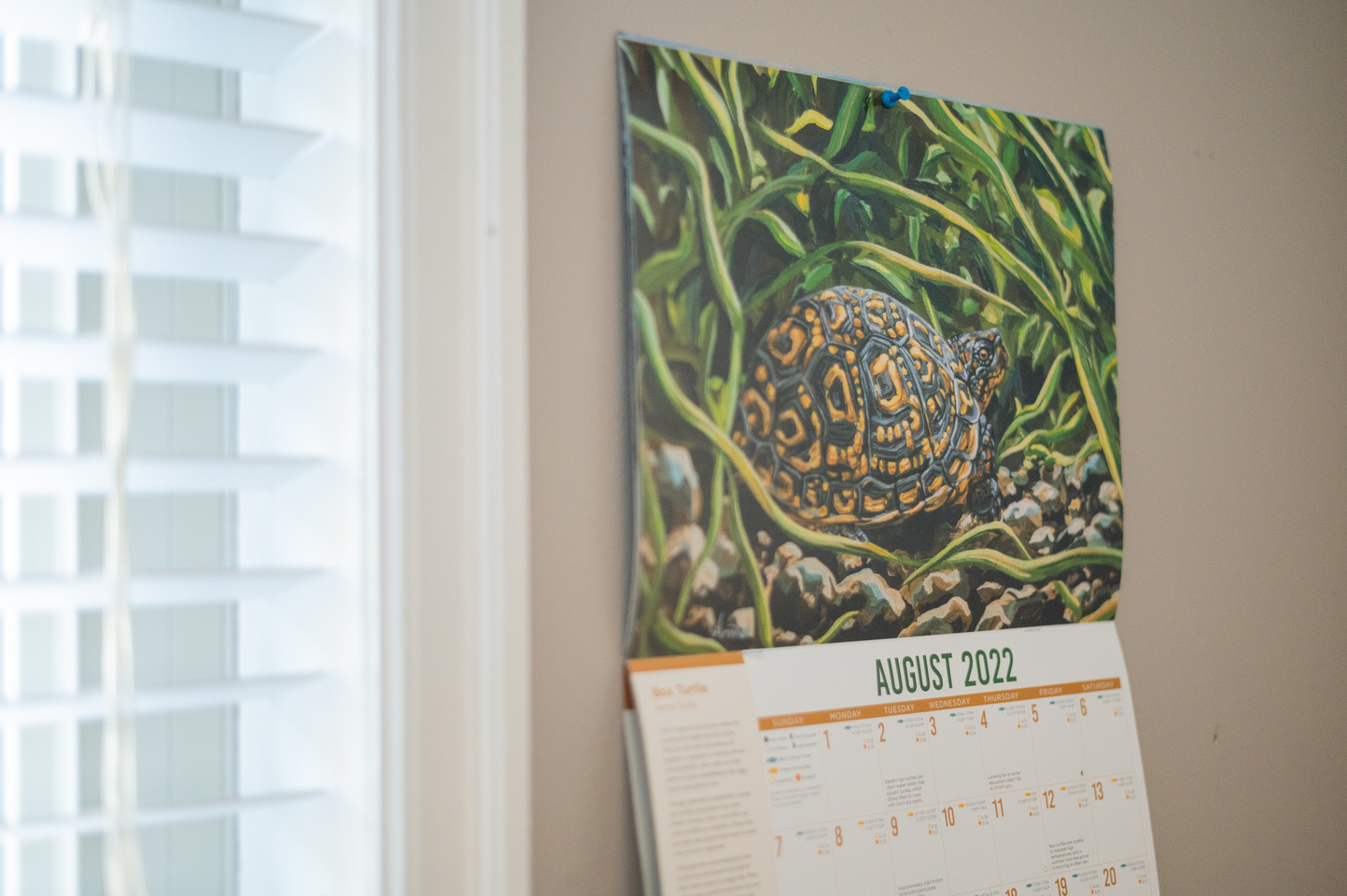When was the last time you saw a box turtle in the wild?
Did you, like so many of us, enjoy watching its slow, steady plod through the grass? Were you treated to the sight of a turtle stretching its neck toward low-hanging tomatoes in the garden and snatching a bite with its hooked beak? Have you picked one up to admire closeup, only to have it shut itself away in its protective shell?
Those innocent pleasures are dwindling. Box turtle numbers have been declining steadily for years. The International Union for Conservation of Nature’s Red List of Threatened Species lists the woodland box turtle as vulnerable, although scientists do not yet have enough data to say how far the population has fallen.

WHAT ARE WOODLAND BOX TURTLES?
Woodland box turtles, formerly called eastern box turtles, are a subspecies of the common box turtle. Woodland box turtles are typically found in the eastern U.S. from Maine to Florida, from the Great Lakes to Texas. The turtles eat fruit, fish, eggs, insects, mushrooms, plants and amphibians.
West Virginia is home to 13 species of turtle, including the box turtle, which is our only fully terrestrial species. Box turtles are found throughout the Mountain State except in the highest elevations of the Mountains.
Although the species is found in a wide range, individual box turtles generally stay close to home. They may travel roughly 50 yards in a day. Researchers have found some individual box turtles remain in their home territory for more than 50 years.

WHY ARE THEY AT RISK?
Although box turtles prefer a slow-paced, fairly solitary life at home, humans can make that difficult. Roads cut through turtle habitat, bringing a rush and crush of automotive and human traffic.
Unfortunately, box turtle populations in West Virginia have been declining due to increases in road mortality, disease, and over collection. West Virginia Division of Natural Resources biologists have been working hard to better understand the status of box turtles in our state, using citizen science efforts and long-term monitoring to better assess species distribution and abundance, as well as enacting updated regulations to protect West Virginia native amphibian and reptiles, including box turtles.
Effective March 23, 2021, West Virginia’s reptile and amphibian regulations prohibit the possession of 80 species of reptiles and amphibians. For complete wording of the law, see §58CSR73 West Virginia Reptile and Amphibian Rule.
What Can You Do to Help?
You can help protect West Virginia’s box turtles by doing any of the following:
- You can help protect box turtles and support their conservation by reporting suspicious activity or known collection of box turtles, and other amphibians and reptiles, to the WVDNR Natural Resources Police.
- Do not take box turtles from the wild. Turtles, as well as other amphibians and reptiles, should never be released away from the location they were seen so as to avoid potentially spreading wildlife disease and to maintain populations.
- When it is safe to do so, you can help box turtles cross the road. Move the turtle to the side the turtle was heading. Do not take the turtle to a different location just because you may feel it is a better spot.
- Make your property turtle friendly. Provide your property with habitat features that are beneficial, such as brush piles, fruiting shrubs and bushes. Reduce insecticide use to ensure plentiful insects and other invertebrates. Turtles may hide in long grass, so when mowing in pastures and fields, keep your mower blade at least 8 inches from the ground to reduce the risk of hitting turtles.
- Purchase a West Virginia box turtle license plate to donate directly to non-game wildlife conservation in our state.




